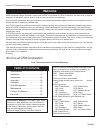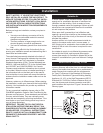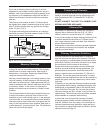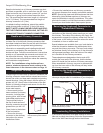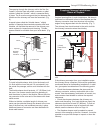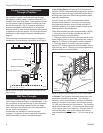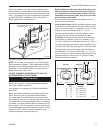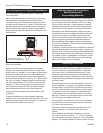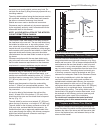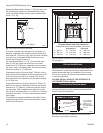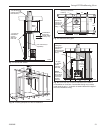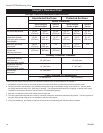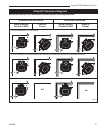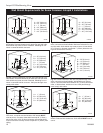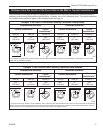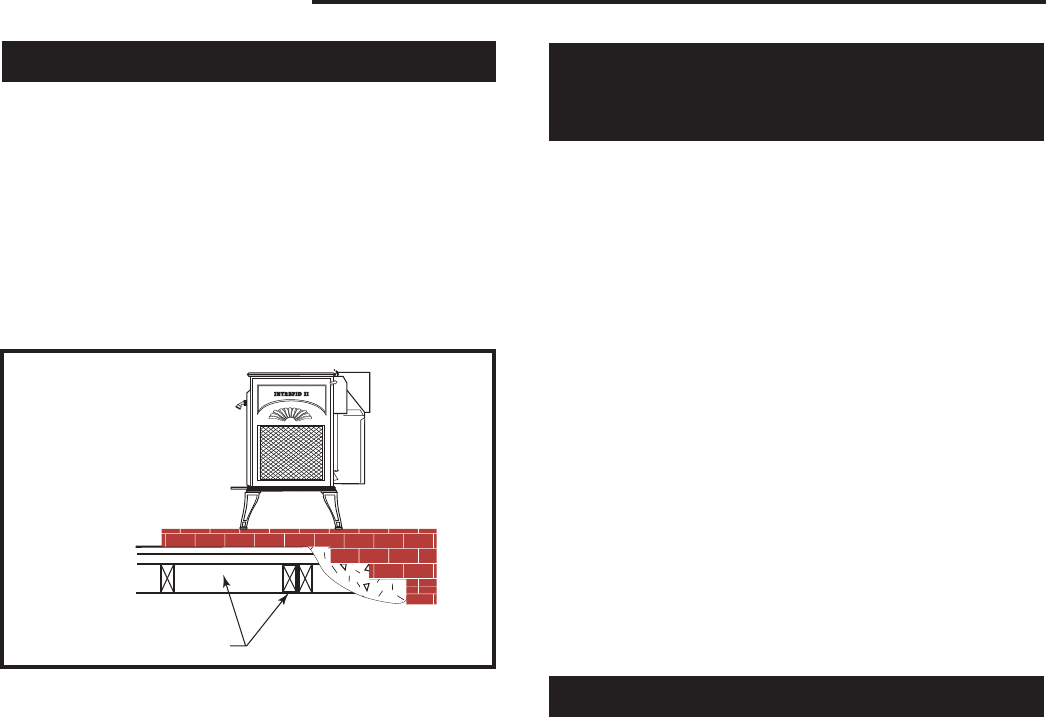
10
Intrepid II Woodburning Stove
2000966
Floor Protection for Fireplace Installations
Do not assume your fireplace hearth is completely
noncombustible.
Many fireplace hearths do not satisfy the “completely
noncombustible” requirement because the brick or
concrete in front of the fireplace opening is supported
by heavy wood framing as in Figure 12. Because heat
passes through brick or concrete readily, it can easily
pass through to the wood. As a result, such fireplace
hearths can be a fire hazard and are considered a com-
bustible floor.
ST247
Rear exit floor dgrm
12/14/99 djt
Wood framing requires
protection from radiant heat
ST247a
Fig. 12 Supporting timbers under fireplace hearth are consid-
ered to be combustible.
Keep in mind that many raised hearths will extend
less than the required clearance from the front of the
heater when it is installed. In such cases, sufficient floor
protection as described above must be added in front
of the hearth to satisfy the minimum floor protector re-
quirement from the front of the stove: 18” (460mm) from
the front in Canada. Fireplace hearths must also offer
the required protection of 8” (203 mm) on either side.
Optional 3” (76 mm) short legs may be used only on
such hearths that meet the width and depth require-
ments outlined previously under “floor protection.”
Hearth rugs do not satisfy the requirements for floor
protection.
Fireplace installations also have special clearance
requirements to the side walls, side decorative trim, and
fireplace mantle. Refer to the information on fireplace
and mantel trim shields in this section.
Keep the Stove and Connector a
Safe Distance from
Surrounding Materials
Both a stove and its chimney connector radiate heat in
all directions when operating, and dangerous overheat-
ing of nearby combustible materials can occur if they
are too close to the heat. A safe installation requires
that adequate clearance be maintained between the
hot stove and its connector and nearby combustibles.
Clearance is the distance between either your stove
(measured from the back edge of the stove’s top plate)
or chimney connector, and nearby walls, floors, the
ceiling, and any other fixed combustible surface. Your
stove has special clearance requirements that have
been established after careful research and testing to
UL and ULC standards. These clearance requirements
must be strictly observed.
In addition, furnishings and other combustible materials
must be kept away from the stove as well. In general, a
distance of 48” (1220 mm) must be maintained between
the stove and moveable combustible items such as dry-
ing clothes, furniture, newspapers, firewood, etc. Keep-
ing those clearance areas empty assures that nearby
surfaces and objects will not overheat.
Reducing Clearances
Stove clearances may be reduced by using heat shields
attached to the stove. Chimney connector clearances
may be reduced by using heat shields on single-wall
connector, or by using double-wall connector. Clear-
ances may also be reduced by using wall shields. All
shielding used to reduce clearances must be listed by a
recognized testing laboratory and approved by the local
regulatory body.
Clearance requirements are established for many dif-
ferent installations. In general, the greatest clearance is
required when you are placing a stove and its connec-
tor with no heat shields near a wall with no heat shield.
For example, when the Intrepid II is installed parallel
to the rear wall and no shielding is used, it must be at
least 30” (760 mm) from the wall behind it and at least
24” (610 mm) from walls on either side.
If the Intrepid II is installed in a corner and no shields
are used, the corners of the stove must be at least 20”
(510 mm) from nearby walls.
The least clearance is required when both the stove
and its connector, as well as the wall, have heat
shields.
When shields are attached to the stove or chimney
connector, they are mounted 1” - 2” (25-51 mm) away
from the stove or connector surface on non-combustible
spacers. Air flowing between the stove (and/or chimney



